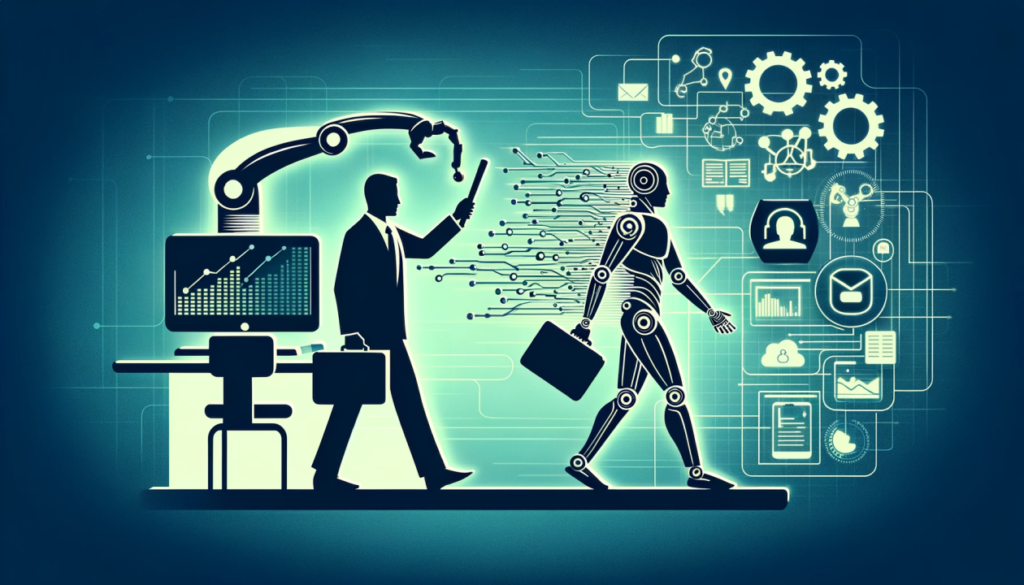Artificial intelligence (AI) is revolutionizing industries worldwide, driving efficiency and transforming traditional workflows. While automation enhances productivity, it also raises concerns about job displacement, workforce evolution, and the future of employment. As AI-driven automation reshapes various sectors, understanding its impact on job markets and potential workforce shifts is essential.
Industries Most Affected by AI-Driven Automation
1. Manufacturing and Industrial Automation
- Robotic process automation (RPA) is replacing manual assembly lines in industries like automotive and electronics.
- AI-powered predictive maintenance reduces downtime and increases production efficiency.
- Warehouse robots handle inventory management, reducing reliance on human labor.
2. Retail and Customer Service
- AI chatbots and virtual assistants automate customer inquiries, replacing traditional call center roles.
- Automated checkout systems and cashier-less stores, like Amazon Go, reduce the need for retail employees.
- AI-driven personalized shopping experiences impact roles in marketing and sales.
3. Transportation and Logistics
- Autonomous vehicles threaten jobs in trucking, ride-hailing services, and delivery industries.
- AI-powered route optimization reduces the need for human planners in logistics.
- Drones and robotic deliveries are transforming last-mile shipping services.
4. Healthcare and Diagnostics
- AI-driven diagnostic tools analyze medical scans, reducing reliance on radiologists.
- Robotic surgeries are enhancing precision and efficiency, changing the role of surgeons.
- AI chatbots handle basic patient consultations, reducing administrative workload.
5. Finance and Banking
- AI automates fraud detection, risk assessment, and algorithmic trading, reducing roles in financial analysis.
- Chatbots and virtual assistants replace human customer service representatives.
- Robotic process automation (RPA) is streamlining loan approvals and data entry tasks.
6. Legal and Administrative Services
- AI-powered tools automate contract analysis, legal research, and documentation.
- Chatbots assist in basic legal consultations, impacting roles in law firms.
- AI-driven transcription services reduce demand for human transcriptionists.
Job Displacement vs. Job Creation: The Workforce Shift
1. Jobs at High Risk of Automation
- Repetitive, rule-based tasks in industries like data entry, customer support, and assembly line work are at risk.
- Jobs requiring low cognitive skills and manual labor are vulnerable to automation.
- AI is replacing roles that involve predictable decision-making processes.
2. New Job Opportunities Emerging with AI
- The rise of AI creates demand for AI engineers, data scientists, and machine learning specialists.
- Roles in cybersecurity, AI ethics, and algorithm auditing are gaining prominence.
- Human-AI collaboration in fields like AI-assisted healthcare, robotics supervision, and augmented creativity is growing.
3. Shift Towards Reskilling and Upskilling
- Companies are investing in workforce training programs to help employees adapt to AI-driven roles.
- The demand for AI literacy, data analytics skills, and technical expertise is increasing.
- Governments and organizations are promoting reskilling initiatives to prepare workers for an AI-driven future.
AI’s Role in Augmenting Human Work Instead of Replacing It
1. Human-AI Collaboration
- AI enhances decision-making, efficiency, and productivity without entirely replacing human workers.
- Many industries are adopting a hybrid model where AI handles repetitive tasks, allowing humans to focus on creative and strategic roles.
- Augmented intelligence supports professionals in fields like medicine, engineering, and creative industries.
2. AI in Enhancing Workforce Productivity
- AI-driven tools automate administrative tasks, allowing professionals to focus on high-value work.
- Digital assistants improve workplace efficiency by managing scheduling, reporting, and workflow automation.
- AI-driven insights help companies make data-driven business decisions.
Challenges and Ethical Considerations in AI-Driven Job Automation
1. Economic Inequality and Job Displacement
- Low-skilled workers face higher risks of unemployment, increasing economic disparity.
- The gap between AI-skilled professionals and traditional workers could widen without proper reskilling programs.
2. Ethical AI Implementation
- Companies must ensure fair and unbiased AI-driven hiring and automation practices.
- Regulations should be in place to prevent exploitative AI-driven labor policies.
3. Government Policies and Regulations
- Governments need to implement universal basic income (UBI) discussions, tax policies on AI-driven industries, and workforce transition programs.
- AI governance frameworks should ensure responsible AI deployment in workplaces.
AI is undoubtedly transforming the job landscape, displacing certain roles while creating new opportunities. The future workforce will require continuous learning, adaptability, and human-AI collaboration to thrive in an AI-driven economy.




